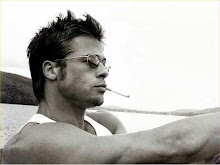Kung fu is a skill concerned with a spontaneous and violent interaction between two people.
Though two-man forms do exist, most forms are practiced without a partner, and they are by nature choreographed; the spontaneousness of actual violence is not present.
So what purpose do they serve?
How are they useful in training the skill that is kung fu?
What I now feel about learning and practicing forms is this:
It’s not about learning and practicing "moves".
It’s about learning and practicing “movement” and “feeling”.
In that sense, learning and practicing forms IS dance.
And this, as I currently see it, is the combat application of the dance:
For beginners, practicing forms is a way of preparing to practice with a partner.
For people with years of experience, it’s also a way to practice feeling and movement when you don't have a like-minded partner available to practice with.
Which "moves" or "techniques" are strung together to constitute a form or a kata is irrelevant.
Spending a lot of time thinking about "how to use this technique" is interesting, but I don't feel it's central to what makes forms useful as a training tool.
The most important use of forms is both as a ritual and a dance that trains the correct quality of movement and emotional/mental state that allows movement to happen spontaneously and correctly when interacting with a partner (or, as mentioned, when someone is physically attacking you).
The fundamental principles that make kung fu work are far more similar to principles of salsa or tango than most people realize.
The movement and feeling of practicing forms is as joyful and pleasurable as doing salsa or tango or hip-hop, which is in and of itself a reason for practicing forms.
But since most of us are interested in the combat application, we probably won’t enjoy practicing forms unless we can directly feel how practicing these choreographed rituals relates to the skill of interacting with another person in a situation that is violent and unchoreographed.
That’s why I stopped training the forms, forgot them and had to relearn them.
For me, every move or technique under the sun feels exactly the same.
So I don’t drill moves or techniques.
I train that feeling, and the mental/emotional state that allows me to keep that feeling at all times while under rapidly and randomly changing pressure.
It feels like surfing.
When there is a like-minded partner available, I use that partner to practice the singular feeling and mental/emotional state.
When there is no like-minded partner available, I can practice feeling against the wall or a tree or a door, or feel how the bottom of my feet interacts with the ground as I shift my body weight around.
I also use simple, boring Wing Chun forms to practice that feeling and mental/emotional state.
Obviously, using a partner is more fun, more effective, and ultimately more important.
But I still find the forms to be useful as tools for both learning and practicing correct feeling and movement.
I once had a teacher who had learned more than 500 forms "because each one was more fun than the last".
But the simple Cheng Man-ching tai chi form consisting of 33 moves is enough to get the job done.
Anything more than that is just for fun.
Comments?
(This was something I had been thinking about for a long time. So when I finally started writing a comment about it on another blog, it all came gushing out. Since it was one of many blog topics still in my head that I haven't had time to write out, I decided to cut and paste it to the blog.)
pk789slot
3 weeks ago



